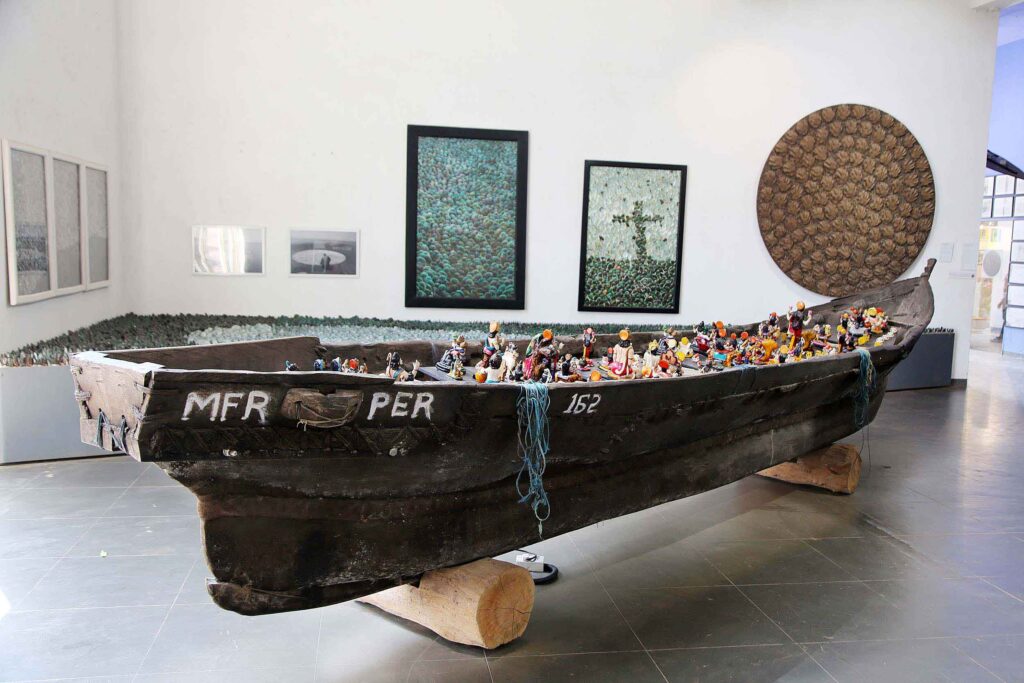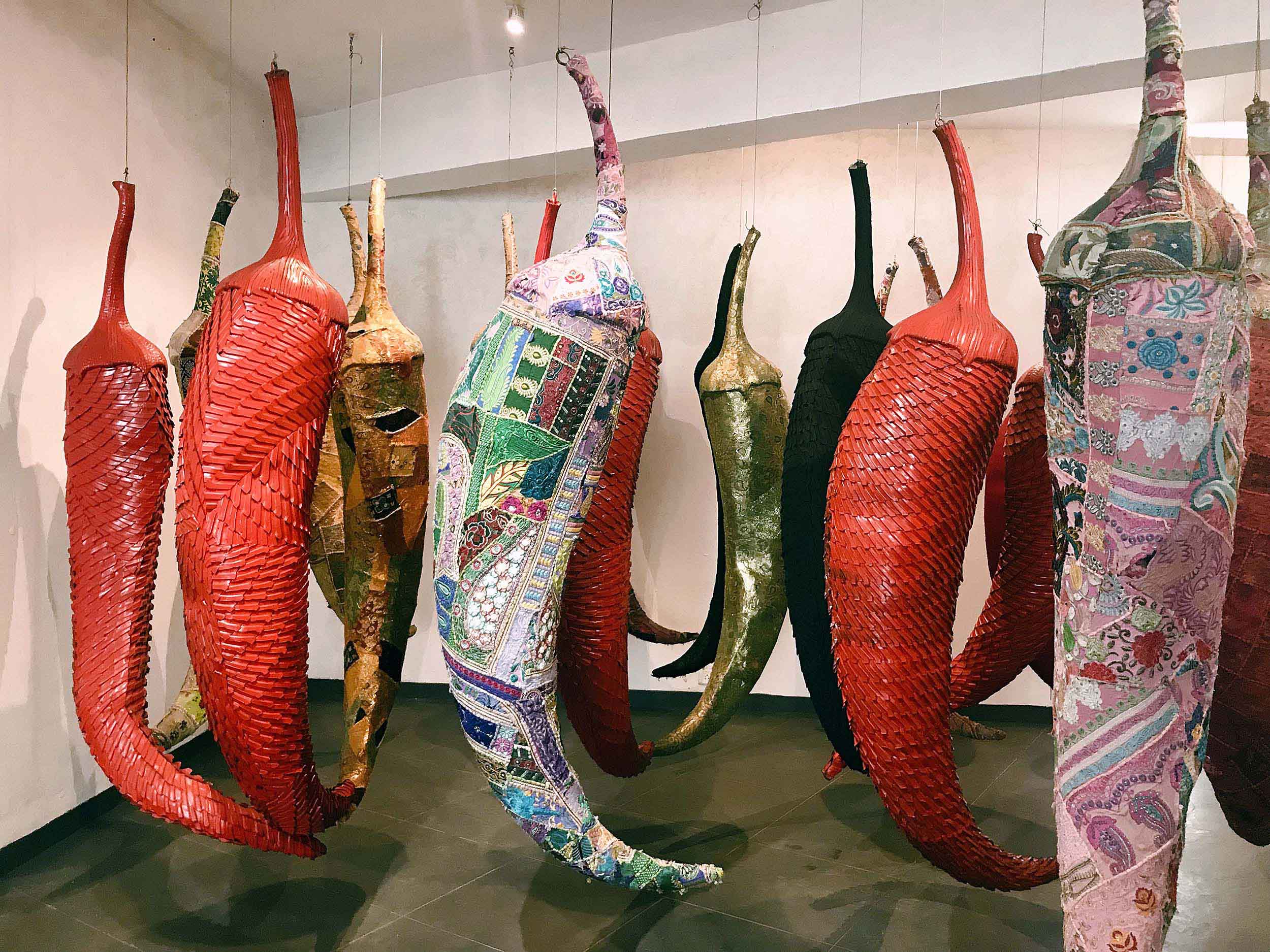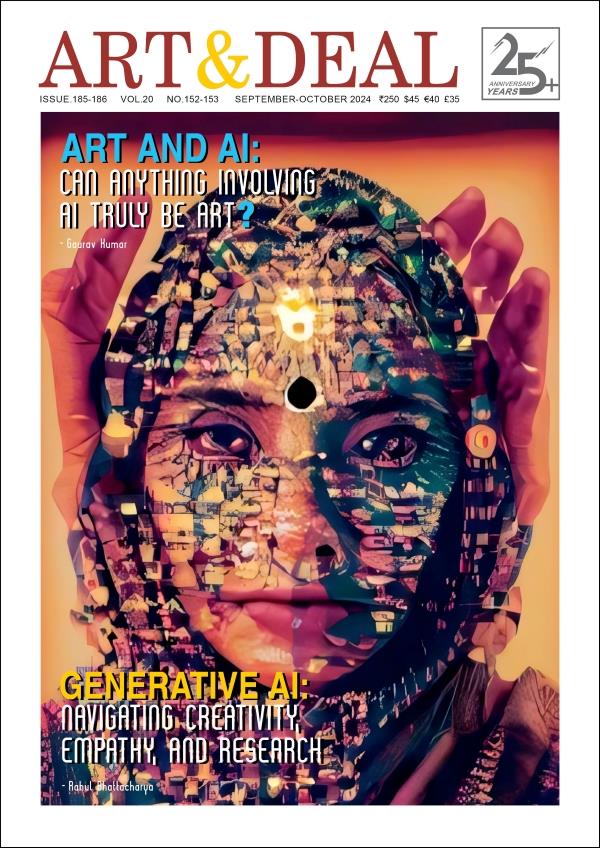
Old fishing canoe with Plaster of Paris Gods
690 cm x 149 cm x 110 cm, 1 Tonne, 2016
In the heart of the wonderful coastal Goa with miles of sun, sand, and sea, the Museum of Goa is a cultural Mecca. Artist Dr. Subodh Kerkar created this private contemporary art space in 2015. The acronym for the Museum of Goa is MOG, aptly translates to “love” in Konkani. Kerkar’s love for the arts made him create this museum and his dedication has paid off, exposing the Goans and others to a new world that they have begun to appreciate and love.
This unique museum uses contemporary art to relate the history of Goa without the aid of ancient artefacts. The ethos is to take art to the masses by making it available to all including school and college students. Present-day art is the universal language of the world. The museum speaks to a wide variety of contemporary concerns from history to modernism and has been created to showcase the best in contemporary art and put Goa on the international art map. Besides bringing artists, curators, art enthusiasts, educators, students, and audiences from all walks of life, it has become a platform for workshops and residences that include lectures, talks and art courses. The idea was to remove the “exclusive” tag and reach out to everyone. The space is used to celebrate the history of the people of Goa in a modern environment.
Referring to his trajectory Kerkar said “I had a gallery where I used to showcase my works along with the ones of other artists in Kalangut at a time when there were no art galleries in Goa. Those were tough times. When Ingo created the Saturday Night Market, he offered me a free space as he wished to show art besides crafts. I used this space and shared it with other artists. At that time the population was about 10 lakhs, and there were not many buyers. I was a medical doctor and painted as a hobby. I was attached to hotels. I sold my artwork mostly to foreign tourists. There was a search for understanding art within me that was fulfilled when I visited contemporary art spaces in Europe. I felt that everyone must get an opportunity, so I created this space, a hybrid of a gallery and a museum. I narrate history using contemporary art. In the museum, we wish to remove the barrier of viewing art. We want everyone to come and experience art as we feel art is not only for the elitist. My happiest moments are when common people come in.”
Many of the artworks act as a window to the history of Goa. At the entrance, a sculpture of a Gaur or iron bull welcomes the visitors, validating the origin of the name Goa to the land of cattle herders. Several large sculptures instantly seize the viewer’s attention, particularly the orange terracotta sculpture of a rooster that is an ode to a 400-year-old Goan folk song about a rooster.
The installation of the huge chillies in fibreglass, rubber tyres, and cotton fabrics is Kerkar’s tribute to the commodity that has added that extra bite to our food. There is a belief that in the past Indian cuisine used only pepper and other spices in their food. However, after the arrival of a Portuguese caravel in Goa from South America laden with chillies in the early 16th century, this spice became an integral part of the local food preparations.
Another historical canvas on display by Viraj Naik, titled Triumphant Trio, depicts the outcome of a close encounter between Vasco da Gama and Timmayya, who after being captured was brought before the captain. Ordinarily, the captive would have been executed. However, not only was his life spared, he was also in fact appointed a local agent and entrusted with great powers. This painting depicts a wonderful creation of visible brushstrokes by the well-known Goan artist Naik.
Another significant installation is The Slave Fork, created with cowrie shells. They depict the history of thousands of slaves from various Bantu tribes brought by the Portuguese to Goa. Old Goa became the main centre for the slave trade. The slaves were purchased from the interiors of Mozambique. Forked branches were used to tie two slaves together. Men, women, and children were sold for cowry shells, the currency of that region. The artist’s narrative is not timid, but something that stirs the imagination.
Another intriguing piece is the installation of a huge boat peopled with men and women seated wearing fine attires and holding onto Hindu idols of gods and goddesses. In 1510 a Goan ruler Adil Shah invited the Portuguese to Goa. Not content with the gains made by the spice trade, the Portuguese wanted to convert the Goans to Christianity. They demolished temples and created churches. This installation portrays the boat that carried the suffering Hindus with the statues of their gods and goddesses in their hands across the Mandovi and Zhari rivers to Ponda to find a roof for their gods in huts or any place of refuge. This powerful vision of the boat was firmly entrenched in the mind’s eye. “This is history without malice to the Portuguese and Christian community.” says artist Kerkar.
Kerkar is a great admirer of F.N. Souza and is looking forward to several events this year to celebrate Souza’s centenary. Some years ago, as a tribute to F.N. Souza, Ashok Bajpai and Sabitha Satchi came up with the concept of Posthumus Dialogues with Souza followed by an exhibition of the works of several artists held at the museum portraying Souza’s anguish, eroticism, Christ, church, and landscapes in different mediums.
This museum spread across 1500 square meters is located in the Pilerne Industrial Estate and has been designed by Dean D’Cruz. It houses galleries, an art store, an auditorium, and a café. It has become a haven for the residents of Goa, who have evolved over the years to genuinely appreciate the arts. They are thirsty for knowledge, and the museum offers a source of inspiration, speculation, and more.
Read More>> Please Subscribe our Physical Magazine

